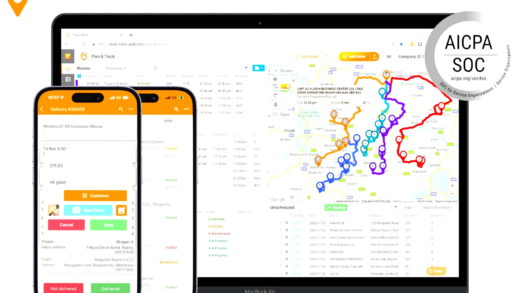This article explains the importance of blue highway exit signs for businesses, detailing eligibility criteria, selection processes, associated fees, and the influence of local government. It also addresses common misconceptions and the frequency of updates for featured businesses.
Types of Businesses: What Can Get Featured?
Blue highway exit signs play a crucial role in helping travelers identify businesses along the highway. Businesses featured on highway signs typically include those that provide essential services to travelers. These services can range from food and lodging to fuel and vehicle maintenance. Here are some common categories of businesses that can be highlighted:
- Restaurants and fast food chains
- Hotels and motels
- Gas stations
- Rest areas with amenities
- Attractions or entertainment venues
These businesses are often strategically located to cater to the needs of highway users. By understanding what types of businesses can be featured, owners can better position themselves to attract highway traffic.
Available Spots: How Many Businesses Can Be Featured?
When it comes to blue highway exit signs, the number of available spots for businesses can vary significantly based on the location and size of the highway exit. Generally, a single exit may feature several businesses, but there are limitations. Here are some factors that influence how many businesses can be showcased:
- Highway design and layout
- State regulations governing sign placements
- Visibility and space constraints
In many cases, only a handful of businesses are selected to ensure that the signs remain uncluttered and effective. Understanding the limitations can help businesses gauge their chances of being featured and plan accordingly.
Eligibility Criteria: What Do You Need to Qualify?
To qualify for inclusion on blue highway exit signs, businesses must meet specific eligibility criteria. These requirements can vary by state but generally include:
- Being located within a certain distance from the exit
- Providing services that are deemed essential for travelers
- Complying with local zoning laws
Additionally, businesses may need to demonstrate their reliability and quality of service. Meeting these criteria is crucial for businesses looking to take advantage of this valuable advertising opportunity.
Selection Process: How Are Businesses Chosen?
The selection process for businesses featured on blue highway exit signs is typically managed by state transportation departments. The process often involves a review of applications based on the previously mentioned eligibility criteria. Factors that may influence the selection include:
- The type of service provided
- Distance from the exit
- Consumer demand and feedback
Understanding this selection process can help businesses prepare their applications more effectively, enhancing their chances of being featured on the signs.
Associated Fees: Are There Costs for Placement?
Blue highway exit signs come with associated fees that businesses must consider when seeking placement. These fees can vary based on several factors:
- State regulations: Different states have varying rules and fee structures for sign placements.
- Location: Fees may depend on the exit’s visibility and traffic volume.
- Sign type: There are different types of signs, and some may have higher costs due to their size or features.
Typically, businesses can expect to pay an initial application fee, which can range from a few hundred to several thousand dollars. Additionally, there may be annual fees for maintaining the sign placement. It’s essential for businesses to budget accordingly and understand the financial commitment involved in being featured on these signs. This investment can lead to increased visibility and customer traffic, making it a worthwhile consideration for many businesses.
What If You Don’t Make It?
If a business does not get selected for a blue highway exit sign, it can feel disheartening. However, this doesn’t have to be the end of the road. Here’s what can happen:
- Feedback: Some states provide feedback on why a business was not chosen, which can be useful for future applications.
- Reapplication: Businesses often have the option to reapply during the next selection period, improving their chances with adjustments based on feedback.
- Alternative advertising: Consider other marketing strategies, such as digital advertising or local promotions, to reach travelers.
Not making the cut can serve as a learning experience. Businesses should analyze their offerings and enhance their services, making them more appealing for future sign placements. Persistence is key in securing that coveted spot.
Impact on Travelers: How Do Signs Influence Choices?
Blue highway exit signs significantly influence travelers’ decisions. These signs serve as beacons, guiding weary road users toward available services. Here’s how:
- Visibility: Clear and attractive signs catch the eye of drivers, prompting them to stop at featured businesses.
- Convenience: Signs provide essential information at a glance, making it easier for travelers to make quick decisions.
- Brand recognition: Frequent exposure to specific businesses on these signs can establish brand familiarity, leading to increased patronage.
Research shows that travelers are more likely to stop at businesses they recognize from highway signs. Therefore, businesses featured on these signs can experience a notable boost in customer traffic, enhancing their overall success. Understanding this impact can help businesses leverage their sign placements effectively.
Common Myths: What Misconceptions Exist?
Blue highway exit signs often come with a range of misconceptions that can mislead businesses and travelers alike. One prevalent myth is that only large, well-known corporations can be featured. In reality, small local businesses can also qualify, provided they meet the eligibility criteria. This opens the door for diverse options on the highway.
Another common misconception is that businesses must pay exorbitant fees to be included. While there are costs associated with placement, they are not as prohibitive as some might think. Additionally, some people believe that being featured on these signs guarantees increased traffic. While visibility does help, actual traffic increases depend on various factors like location and service quality.
- Myth: Only large businesses can be featured.
- Myth: Fees are excessively high.
- Myth: Being featured guarantees increased traffic.
Understanding these myths can help businesses make informed decisions about their advertising strategies.
Local Government Influence: Can They Affect Features?
Local governments play a significant role in the features and regulations surrounding blue highway exit signs. They can influence which businesses are eligible for inclusion by setting specific criteria based on community needs and priorities. For example, local governments may prioritize businesses that provide essential services, such as gas stations or eateries, to better serve travelers.
Additionally, zoning laws set by local authorities can dictate where signs can be placed and what types of businesses can be featured. This can affect visibility and access for potential customers. Local governments also often review applications to ensure compliance with state regulations, thereby playing a crucial role in the selection process.
- Local governments prioritize essential services.
- Zoning laws influence sign placement.
- Compliance with state regulations is necessary.
Understanding the local government’s role can provide businesses with insights into how to navigate the process for being featured on highway signs.
Update Frequency: How Often Are Businesses Changed?
Blue highway exit signs are not static; they undergo updates based on a specific schedule. The frequency of these updates can vary by state and local regulations, but generally, businesses can expect changes to occur every few years. Factors influencing updates include changes in local businesses, new entries, and the closure of existing establishments.
Regular updates ensure that travelers receive current and relevant information, enhancing their overall experience. For businesses, this means that if they are not selected during one cycle, they can reapply during the next update phase. This cyclical nature encourages businesses to continually improve their services to meet the evolving needs of travelers.
- Updates typically occur every few years.
- Changes are based on new entries and closures.
- Businesses can reapply in future cycles.
Staying informed about update frequencies can help businesses strategize their marketing efforts effectively.





Comments are closed.